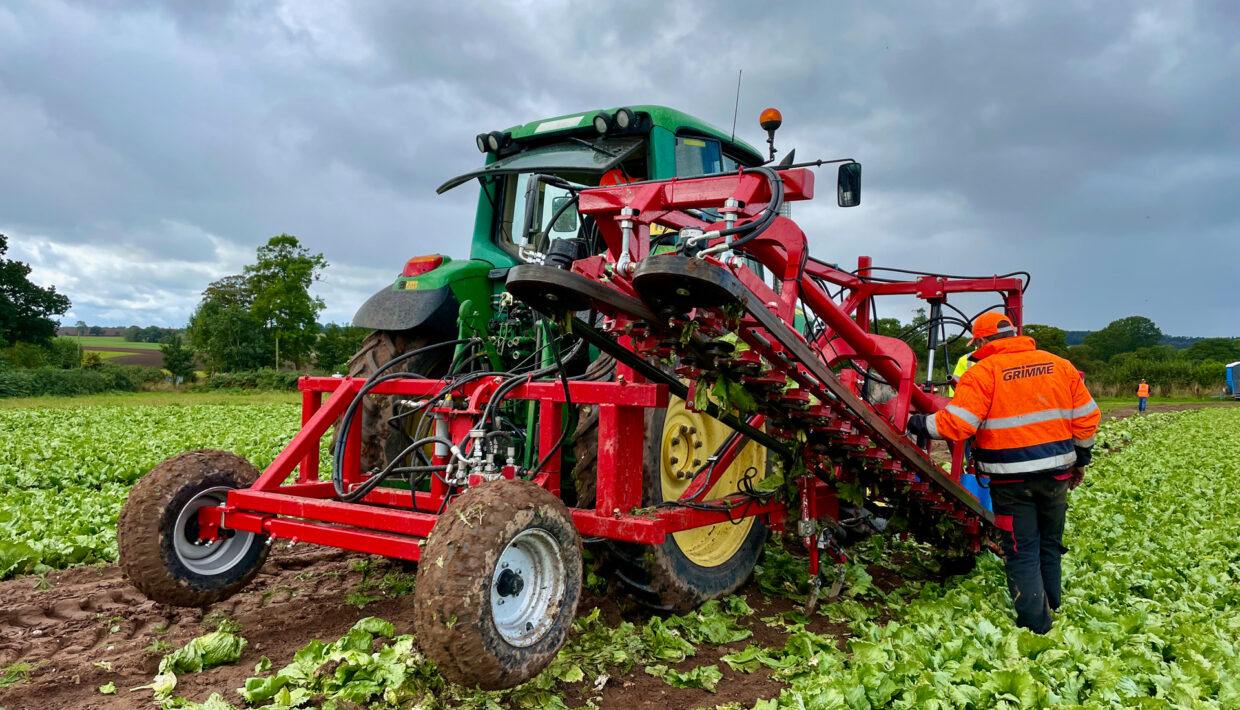Every year the British lettuce growing industry has thousands of seasonal workers descend upon it to get the salad crop out of the ground and packaged ready for supermarkets. But the availability of workers has been declining. The accessibility of migrant labour has decreased – something Brexit and Covid19 have exacerbated – and the domestic workforce has remained averse to the manual requirements of the harvesting process.
For many decades lettuce growers have relied on seasonal labour for harvesting it, explains Dermot Tobin, managing director of farming at PDM. “Nearly all the lettuce you see on UK supermarket shelves is cut by hand. Sourcing labour is getting really challenging and with wage inflation rising far quicker than grower prices, margins are really tight.” Meanwhile the demand for lettuce is as high as it’s ever been.
Lettuce – a valuable field crop
Whole head, or iceberg lettuce, is the UK’s most valuable field vegetable crop, with around 99,000t harvested in 2019 and a market value of £178 million – but as harvesting it has required a manual workforce up to now, its continuity has potentially been in jeopardy. It’s a similar situation in Europe and the US, with these regions also suffering issues accessing seasonal labour. But this offers significant potential markets for a solution.

The conveyer pinch belts hold the lettuce so the stem can be cut.
To tackle this conundrum a team of companies have come together to collectively resolve the problem. By collaborating on a joint research and development project into a robotic lettuce harvester, they hope to cut the labour requirements for harvesting lettuce in the UK and further afield.
Collective knowledge make that idea reality
Working at PDM Produce and G’s Fresh in Shropshire, a conglomerate of Grimme, Agri-EPI Centre, Image Development Systems, Harper Adams University and the Centre for Machine Vision at the University of the West of England, have brought together their collective knowledge to make an idea a reality. With the help of funding from Innovate UK the project got off the ground in April 2021 and by September a working model was already harvesting lettuces.
Working at PDM Produce and G’s Fresh in Shropshire, a conglomerate of Grimme, Agri-EPI Centre, Image Development Systems, Harper Adams University and the Centre for Machine Vision at the University of the West of England, have brought together their collective knowledge to make an idea a reality. With the help of funding from Innovate UK the project got off the ground in April 2021 and by September a working model was already harvesting lettuces.

The prototype harvester is mounted on the side of a tractor.
So where did the companies start? By modifying a leek harvester. Using this as a base cone-shaped augers have then been fitted and angled to lift the lettuces from the ground and move them up into pinch belts. The aim is that the outer wrapper leaves will be mechanically removed and using a camera, machine vision will precisely identify the cut point on each stem and a knife will robotically cut it to leave around 3mm of stem.
“The clever bit is identifying the crucial place to cut the lettuce and triggering the knife to cut it,” explains Duncan Ross, project development manager at Agri-EPI. However, there are some issues to overcome with dirt from the lettuce leaf removal obscuring the machine vision.
The clever bit is identifying the crucial place to cut the lettuce and triggering the knife to cut it.
Duncan Ross
Currently the harvester is mounted on the side of a tractor, with the driver guided by a camera, but the long-term aim is to have three harvesters mounted on packers, so the lettuces can be robotically harvested, then hand wrapped and packed ready for wholesalers immediately. The robot has the potential to cut labour requirements in half and removes the need for laborious bending over in fields to cut the lettuce.
But the project is still in the feasibility stage, so it will be a while before lettuce fields across the UK and the Continent see it in action. And when it does arrive, it could be largely tailored to the biggest growers who can afford investing over £300,000 per machine – though by that point the need to replace labour is likely to be just as desperate, if not more so. The industry needs to embrace robotic technology to reduce our reliance on labour,” adds Mr Tobin. “Being involved in this project is of the utmost importance to our business.”

